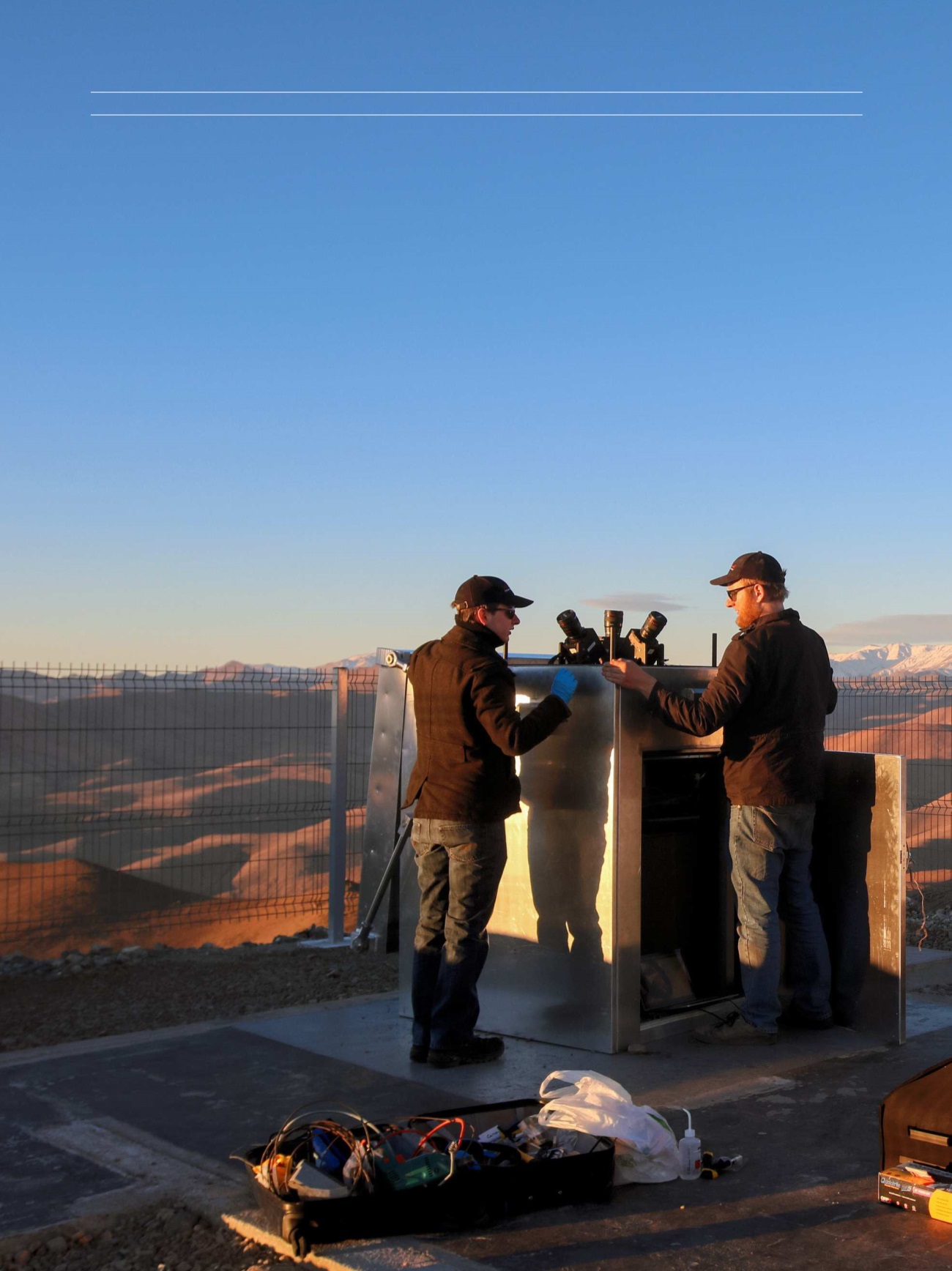

30
SPACE CHRONICLES
hunter takes repeated measure-
ments of the brightnesses of thou-
sands of stars and uses software to
hunt for the slight dimming of a
star’s light as a planet crosses the
face of the star. This exoplanet dis-
covery method is called transit pho-
tometry. The planet’s size and orbit
can be directly determined through
this method, and in very bright sys-
tems the planet's atmosphere can
also be characterised by further ob-
servations with large telescopes
such as ESO’s Very Large Telescope.
The main purpose of MASCARA is to
find exoplanets around the bright-
est stars in the sky, currently not
probed either by space or ground-
based surveys. The target popula-
tion for MASCARA consists mostly
of “hot Jupiters” — large worlds
that are physically similar to Jupiter
but orbit very close to their parent
star, resulting in high surface tem-
peratures and orbital periods of
only a few hours. Dozens of hot
Jupiters have been discovered with
the radial velocity exoplanet detec-
tion method, as they exert a notice-
ably gravitational influence on their
host stars.
“Not much can yet be
learned from the planets discovered
via the radial velocity method, as
they require significantly better di-
rect imaging techniques to separate
the light of these cool, old planets
T
he MASCARA at ESO’s La Silla Ob-
servatory. This picture shows the
system during installation as the sun is
setting. [ESO/G. Otten and G. J. Talens]
















